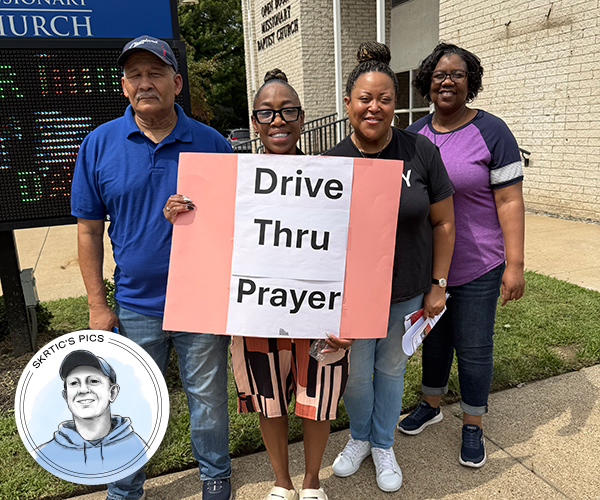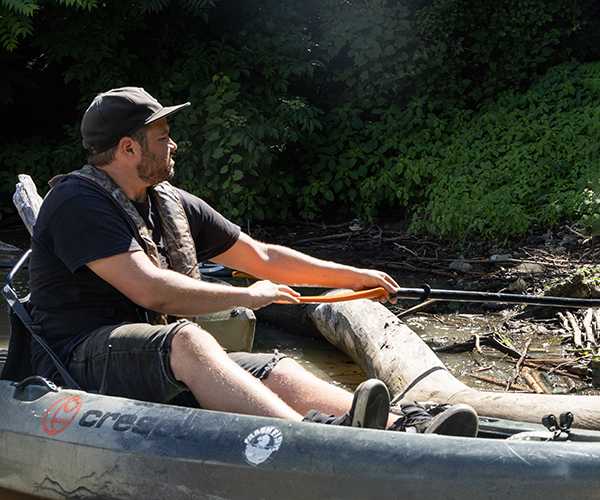Living in Antarctica
Ralph Harvey, a planetary geologist at Case Western Reserve University, has led meteorite-collecting expeditions on the East Antarctic Plateau for 22 years. The trips usually begin around Thanksgiving and end two months later.
Usually, you’ve got winds of 10 to 15 knots. If it gets much higher than about 20 knots, there’s snow moving and your eyes are watering and your fingers are numb. We typically take a break on those kinds of days.
We can also get in situations where it can be quite calm and pleasant, but because we’re up on the Antarctic plateau at 2,000 meters, clouds from the coast can come up the slope and settle right on us. There’s zero surface contrast. There’s no blowing snow at all, but the entire world is encased in white, from the zenith looking straight up to below your feet. There are no shadows.
You’re not going to get lost in that setting per se, but even the smallest bit of topography, a little drift of snow here or there — you just stumble right over it. And there’s no horizon. Your mind can play tricks on you. You don’t really know if you’re standing straight up or not. Those are days we don’t travel.
We probably lose three days out of seven to the weather. It’s not as uncomfortable as you’d think.
When it’s 50 below in Antarctica, you can get by with the same clothes you might wear walking down the street in Minnesota. But we are stuck in that outfit basically day in and day out. We try to take showers or sponge baths. We’ll take a spare tent and hang a water bottle up in the tent, and, if it’s a nice enough day, you have a little shower.
The tents are double-walled. Two people can hide in there comfortably. It’s not the Hilton, but if it’s blowing 30, 40 knots outside and you’re in there with your stove on, it’s going to feel like you’re in a room that’s 50 degrees. If it stretches out to five, six, seven days, there isn’t anyone that isn’t feeling the effects of that and starting to get a little bit blue.
We do have satellite telephones. We can call home. Most people now are going to have at least one or two laptops in camp and a little bit of solar power or wind-generated power so we might watch a movie or two, play some cards.
Eating is a popular sport. You probably need 4,000 to 6,000 calories a day to stay warm. We can eat anything that you can freeze, so we can have steak and lobster if you want. Or canned hams. We’ve seen everything from people making sushi and exotic Thai dishes to people who basically open a can of beans every night. We’ve even experimented with baking a little bit, which is hard with a camping stove. But if it’s going to be a long day, making a couple of biscuits can be phenomenally uplifting.
I grew up in Wisconsin as a creature of the cold weather, so I never felt intimidated.
If your leanings in terms of spiritualism or art are minimalist — you know, maybe Zen-like — Antarctica is the best place on the planet. It’s a beautiful and stark landscape, a lot of sharp edges to it.
One of the things that’s amazing to me is your ability to deal with the petty little aggravations of life after you’ve been in Antarctica. When I come home from Antarctica, I’m uniformly in a good mood for about a month or so. — as told to Ryan Dezember
people
12:00 AM EST
August 20, 2009



